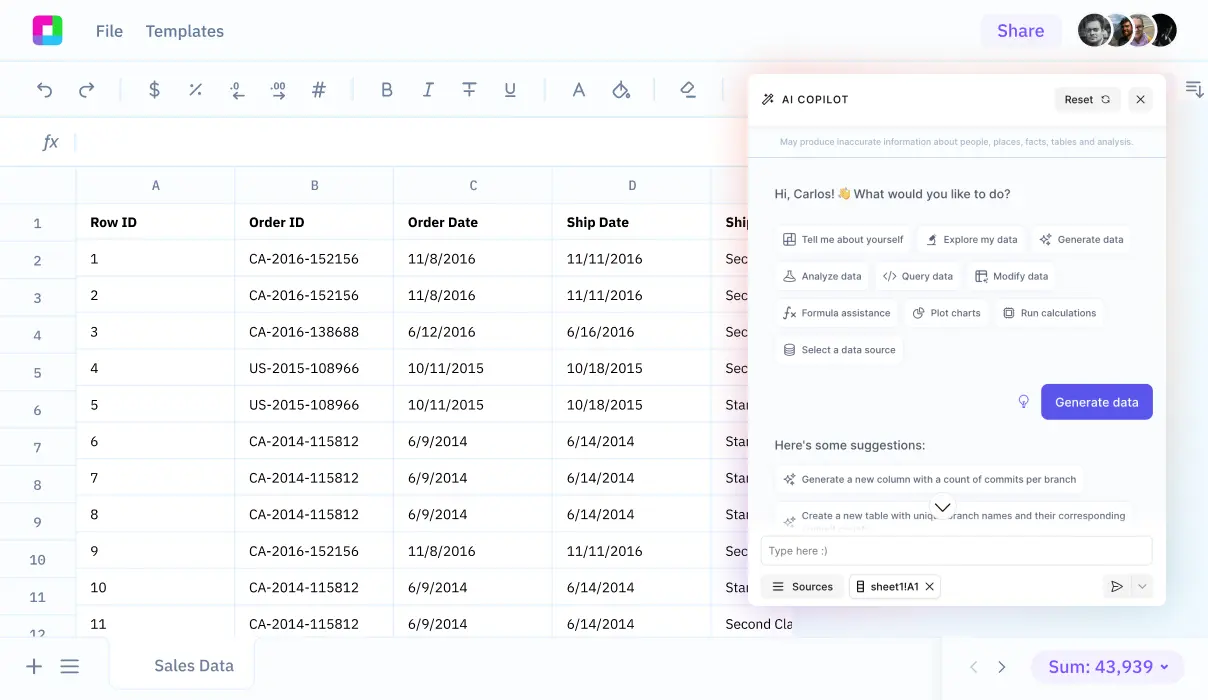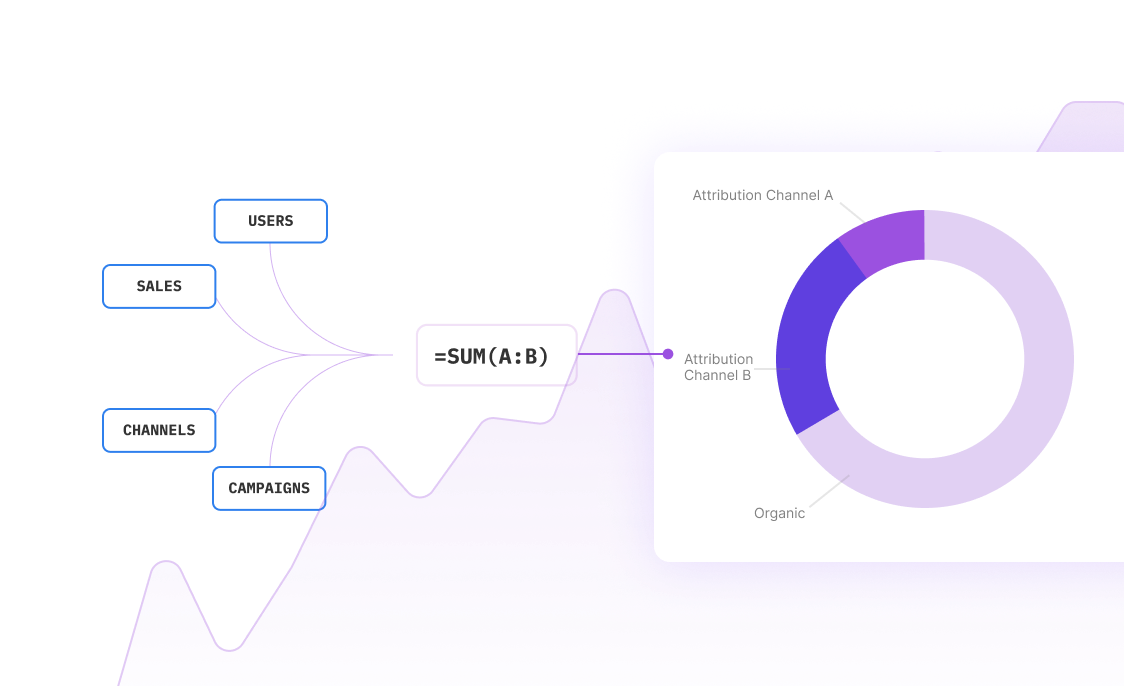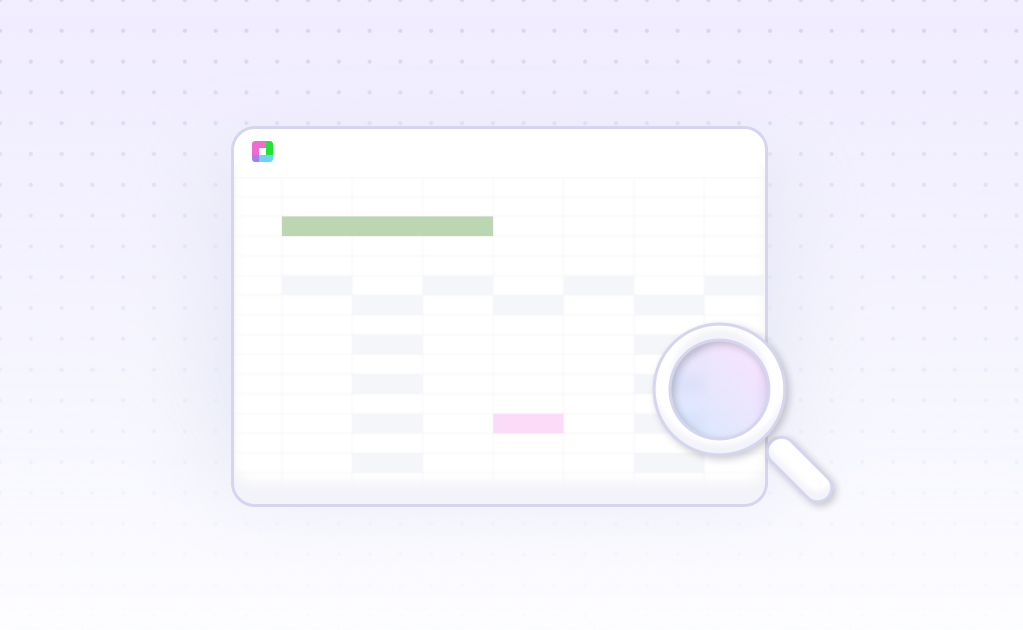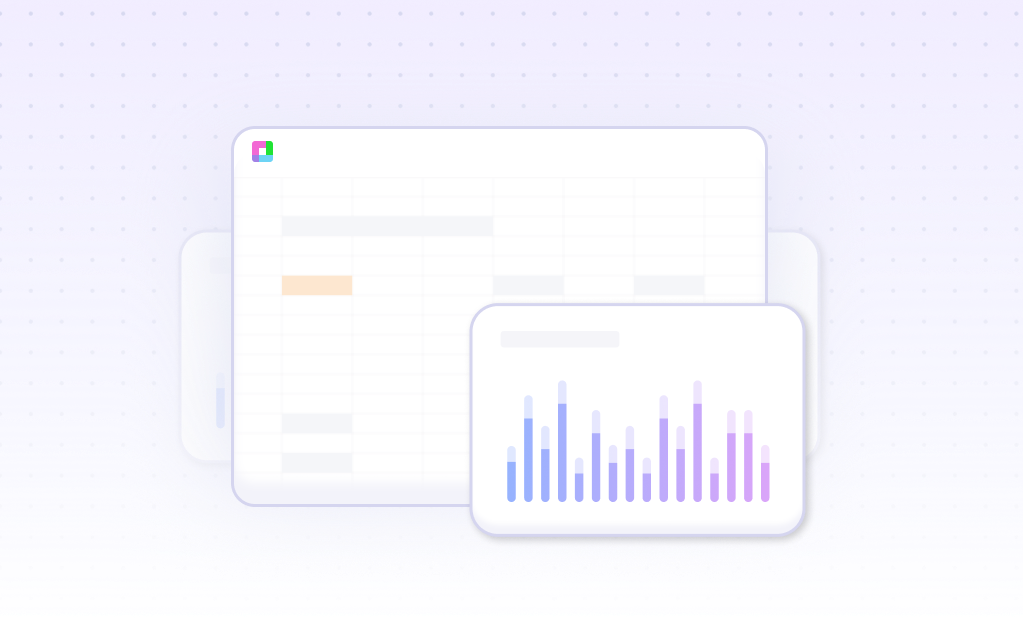
Introduction
Financial flux analysis compares balances between accounting periods to track and manage financial performance. Excel remains a common tool for conducting this analysis by organizing data, calculating variances, and identifying patterns. The process typically involves gathering ERP data into spreadsheets and implementing strategies based on discovered trends.
Sourcetable offers an AI-powered alternative to traditional spreadsheet analysis. This platform combines spreadsheet functionality with an AI assistant that responds to natural language commands and integrates with over 100 data sources. For those without Excel expertise, Sourcetable accelerates formula creation, charting, and data summarization.
Learn how to leverage Sourcetable's AI capabilities for streamlined financial flux analysis at sourcetable.com/signup.
Sourcetable: The Superior Platform for Financial Flux Analysis
Sourcetable combines the familiar spreadsheet interface of Excel with advanced AI capabilities, making it the optimal choice for financial flux analysis. Like Excel, it offers essential features such as audit trails, calculators, charting, and multi-user collaboration. However, Sourcetable's AI-powered capabilities elevate it beyond traditional spreadsheet tools.
Enhanced Automation and Efficiency
Sourcetable's AI automation streamlines data entry, analysis, and decision-making processes. The platform efficiently identifies trends, outliers, and correlations, while generating accurate forecasts based on historical data. This automation significantly reduces the time and effort required for financial flux analysis.
Comprehensive Financial Health Analysis
Through fluctuation analysis, Sourcetable provides critical insights into organizational financial health. The platform supports informed decision-making by revealing trends and variances, essential for budgeting and strategic planning. It also enables early detection of errors and helps mitigate financial risks.
Integration and Collaboration
Sourcetable's integration capabilities with other software platforms enhance collaborative financial analysis. The natural language interface allows teams to quickly analyze spreadsheet data and create visualizations, reports, and automations, making financial flux analysis more accessible and efficient than traditional Excel-based methods.
Benefits of Financial Flux Analysis with Sourcetable
Regular financial flux analysis delivers critical business insights by identifying trends, patterns, and potential risks. This systematic approach improves forecasting accuracy, supports strategic planning, and highlights operational inefficiencies. Through consistent flux analysis, organizations can optimize performance, make data-driven decisions, and allocate resources effectively.
Why Choose Sourcetable for Flux Analysis
Sourcetable offers powerful AI-driven features that streamline financial flux analysis compared to traditional Excel workflows. Its intuitive interface enables quick data organization, analysis, and visualization from CSV files. The platform maintains Excel's core functionality including spreadsheet analytics, audit trails, and multi-user collaboration while adding AI assistance for faster analysis.
Sourcetable's reliable performance and visualization capabilities help finance teams process data efficiently. The platform's AI assistant simplifies complex analysis tasks, allowing professionals to focus on strategic insights rather than technical spreadsheet operations.
Financial Flux Analysis with AI-Powered Spreadsheets
Modern AI-powered spreadsheet tools enable two primary types of financial flux analysis. Horizontal flux analysis compares financial indicators across different accounting periods to identify trends. Vertical flux analysis examines components within a single period against a base figure.
Automated Variance Analysis
AI-enhanced spreadsheets perform automated variance analysis by comparing current and previous year data alongside year-to-date figures. Advanced machine learning capabilities improve payment matching, credit management, and cash forecasting accuracy.
Multi-Dimensional Analysis
Modern financial analysis tools provide customizable views across banks, entities, and regions. This enables comprehensive 360-degree analysis of organizational performance while facilitating faster data processing and improved forecasting capabilities.
Collaborative Insights
AI-powered spreadsheets enhance team collaboration while providing actionable insights through in-depth assessments. The tools can drill down to identify root causes of forecast fluctuations, enabling smarter, data-driven financial decisions.
Financial Flux Analysis Use Cases with Sourcetable
Automated Month-End Close Analysis |
Streamline month-end close by automating data consolidation and variance calculations across multiple accounts. Real-time insights enable quick identification of financial anomalies and expedited issue resolution. |
Expense Variance Tracking |
Monitor changes in costs through automated expense variance analysis. Integrate data from various sources to calculate variances using |
Labor Cost Analysis |
Track payroll variations through automated labor variance calculations. Consolidate timesheet data and wage rates to identify trends and optimize workforce spending. |
Strategic Financial Forecasting |
Generate accurate financial forecasts by analyzing historical trends and variances. Automate scenario analysis and data categorization to improve budgeting accuracy and strategic planning decisions. |
Frequently Asked Questions
What is financial flux analysis and what are its key steps?
Financial flux analysis, also known as variance analysis, is a method of comparing financial data across statements, balances, and accounts over specific time periods to gain insights into a company's financial position. The three key steps are: 1) finding the difference between compared figures, 2) noting significant variances, and 3) providing explanations for those variances.
What are the main benefits of performing financial flux analysis?
Financial flux analysis helps businesses analyze financial data at a granular level, identify growth opportunities, optimize spending and cost-cutting decisions, detect early warning signs, and set performance benchmarks. It provides insights about drivers of financial performance and helps companies identify patterns and troubleshoot issues in their financial data.
How can AI spreadsheets be used to perform financial flux analysis?
AI spreadsheets automate data gathering, organize information chronologically, calculate variances with minimal manual intervention, and interpret results. They can handle large volumes of data while providing real-time insights, making the flux analysis process more efficient and supporting better decision-making.
Conclusion
Financial flux analysis in Excel requires gathering data, organizing spreadsheets, calculating variances, and identifying patterns between accounting periods. While Excel remains a powerful tool for horizontal variance analysis, Sourcetable offers an AI-powered alternative that streamlines the process. This innovative platform combines Excel-like functionality with artificial intelligence to automate formula generation, data cleaning, and chart creation.
Sourcetable's AI capabilities extend beyond basic spreadsheet functions like SUM and VLOOKUP to include advanced data analysis through SQL and Python integration. The platform's voice-driven interface and connections to over 100 platforms, including Quickbooks and Shopify, make financial flux analysis more accessible and efficient. Try Sourcetable's AI-powered financial analysis tools at sourcetable.com/signup.
Recommended Analysis Guides
Connect your most-used data sources and tools to Sourcetable for seamless analysis.
Frequently Asked Questions
If you question is not covered here, you can contact our team.
Contact Us





